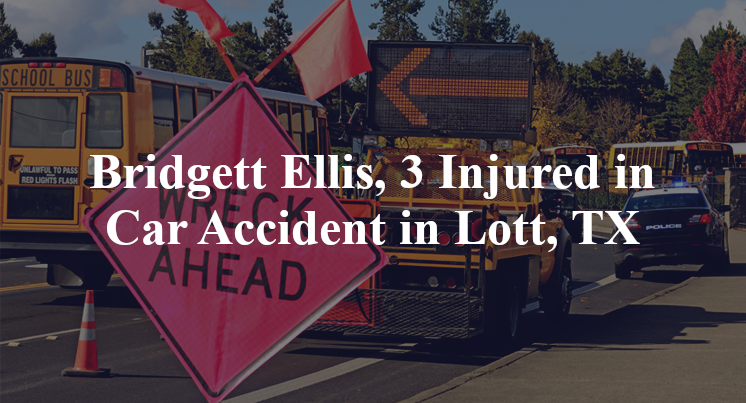Bridgett Ellis, 3 Injured in Car Accident in Lott, TX
Falls County, TX — November 4, 2024, Bridgett Ellis and three others were injured in a car accident at approximately 3:00 p.m. along U.S. Highway 77.
According to authorities, 51-year-old Bridgett Ellis was traveling in a northeast bound Chevrolet Traverse on State Highway 320 at the U.S. Highway 77 intersection when the accident took place.

The Traverse reportedly had drivers assistance engaged at the time of the accident. Officials indicate that, for as yet unknown reasons, the Chevrolet failed to stop for the flashing red light at the intersection. A collision subsequently took place between the Chevrolet and a southeast bound Ford van occupied by a 40-year-old woman and two children ages one and three.
Ellis and the three-year-old from the van suffered reportedly serious injuries over the course of the accident. The adult woman and the one-year-old from the van also sustained injuries, though they were apparently more minor. Additional details pertaining to this incident are not available at this point in time. The investigation is currently ongoing.
Commentary
When a crash occurs at an intersection, it’s natural to assume that someone simply failed to obey the traffic signals. In this case, reports suggest that the Chevrolet Traverse failed to stop for the flashing red light, but that alone doesn’t tell the whole story. To truly understand what happened, we have to ask some key questions.
First, did the authorities conduct a thorough investigation? It’s one thing to determine that a driver didn’t stop, but it’s equally important to understand why. Was the driver distracted, impaired, or suffering from a medical episode? Did visibility issues or signal malfunctions play a role? Since reports indicate that the vehicle’s driver assistance was engaged at the time, did officers consider whether the system contributed to the wreck? A complete investigation should explore these possibilities rather than assuming simple driver error.
Second, has anyone looked into the possibility of a vehicle defect? If the Chevrolet Traverse had a brake issue or a software malfunction in its driver assistance system, that could have played a role in the wreck. As automated driving features become more common, crashes involving these systems raise important questions about their reliability. Investigators should confirm whether the vehicle responded properly to the flashing red light or if a defect prevented it from stopping.
Finally, have all available electronic data sources been reviewed? The Traverse’s event data recorder (EDR) could reveal whether the vehicle attempted to brake, accelerated unexpectedly, or failed to respond to driver input. Traffic camera footage or other electronic records could provide additional insight into whether the vehicle’s actions were consistent with normal operation or if something went wrong.
At the end of the day, answering these questions could be essential to understanding what really happened and why. A thorough examination of all three of these issues—including the quality of police investigations, possible vehicle defects, and electronic data—is the least that can be done to ensure that those affected by the crash receive the clarity they deserve.

*We appreciate your feedback and welcome anyone to comment on our blog entries, however all visitor blog comments must be approved by the site moderator prior to showing live on the site. By submitting a blog comment you acknowledge that your post may appear live on the site for any visitors to see, pending moderator approval. The operators of this site are not responsible for the accuracy or content of the comments made by site visitors. By submitting a comment, blog post, or email to this site you acknowledge that you may receive a response with regard to your questions or concerns. If you contact Grossman Law Offices using this online form, your message will not create an attorney-client relationship and will not necessarily be treated as privileged or confidential! You should not send sensitive or confidential information via the Internet. Since the Internet is not necessarily a secure environment, it is not possible to ensure that your message sent via the Internet might be kept secure and confidential. When you fill out a contact or comment form, send us an email directly, initiate a chat session or call us, you acknowledge we may use your contact information to communicate with you in the future for marketing purposes, but such marketing will always be done in an ethical way.